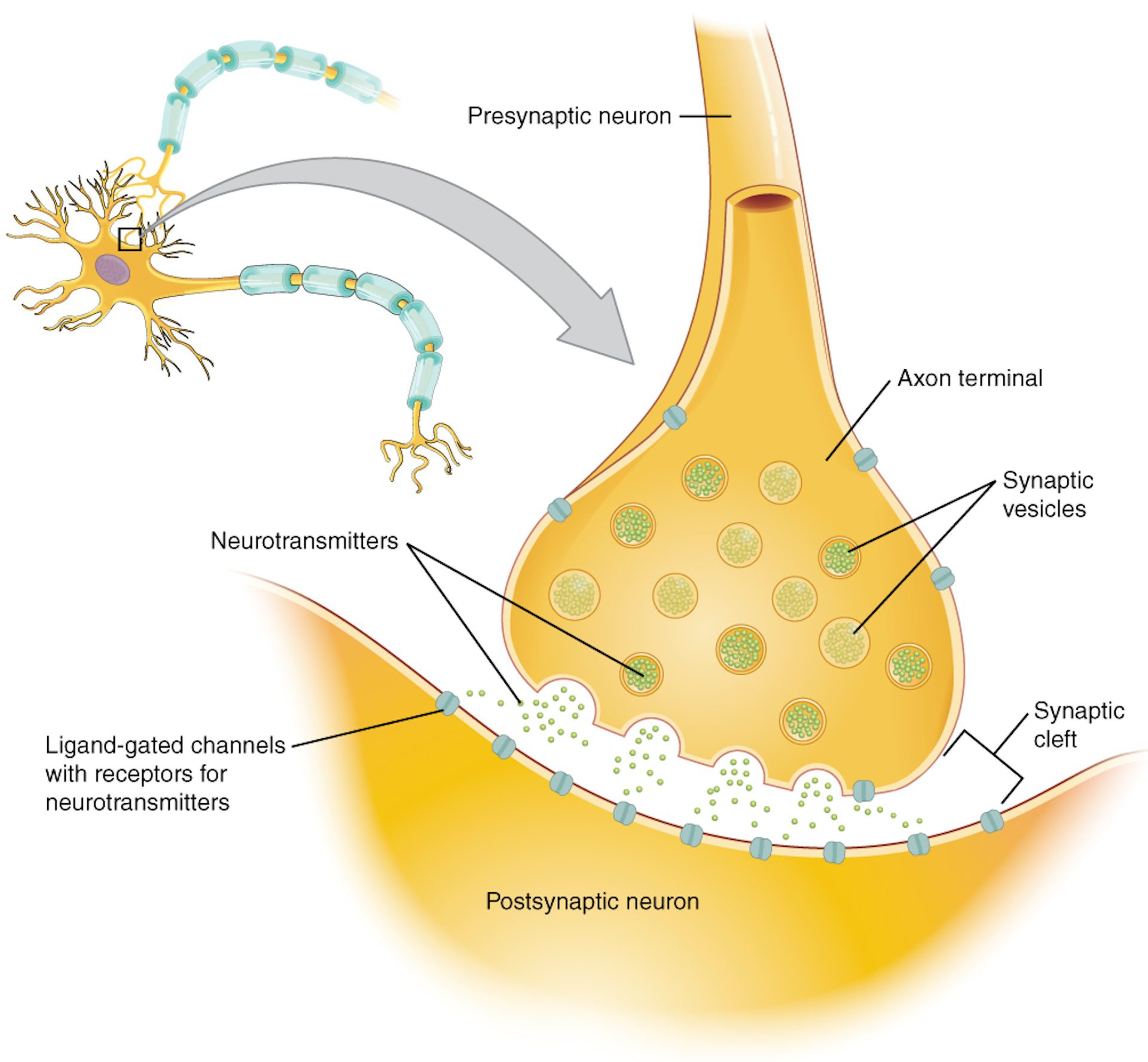![]() Your brain is responsible for controlling most of your body’s activities. Its information processing capabilities are what allow you to learn, and it is the central repository of your memories. But how is memory formed, and where is it located in the brain?
Your brain is responsible for controlling most of your body’s activities. Its information processing capabilities are what allow you to learn, and it is the central repository of your memories. But how is memory formed, and where is it located in the brain?
Although neuroscientists have identified different regions of the brain where memories are stored, such as the hippocampus in the middle of the brain, the neocortex in the top layer of the brain and the cerebellum at the base of the skull, they have yet to identify the specific molecular structures within those areas involved in memory and learning.
Research from our team of biophysicists, physical chemists and materials scientists suggests that memory might be located in the membranes of neurons.
Neurons are the fundamental working units of the brain. They are designed to transmit information to other cells, enabling the body to function. The junction between two neurons, called a synapse, and the chemistry that takes place between synapses, in the space called the synaptic cleft, are responsible for learning and memory.

At a more fundamental level, the synapse is made of two membranes: one associated with the presynaptic neuron that transmits information, and one associated with the postsynaptic neuron that receives information. Each membrane is made up of a lipid bilayer containing proteins and other biomolecules.
The changes taking place between these two membranes, commonly known as synaptic plasticity, are the primary mechanism for learning and memory. These include changes to the amounts of different proteins in the membranes, as well as the structure of the membranes themselves.
Synaptic plasticity can be classified as either being short term, lasting from milliseconds to a few minutes, or long term, lasting from minutes to hours or longer. The chemical processes occurring between the presynaptic and postsynaptic membranes in short-term plasticity eventually lead to long-term synaptic plasticity.
Since scientists think the main way the brain processes and stores information is through these long-term changes to the synapses, we wondered if memory might be stored in the membrane’s lipid bilayer.
We found that exposing a model of a simple lipid bilayer to electrical stimulation – not unlike the stimulation used in studies of the brain – can trigger long-term changes. What made this result unique was that we were able to generate changes in our simple membrane model without the neuronal proteins typically associated with it. Furthermore, long-term plasticity persisted in our model for almost 24 hours without any further electrical stimulation. This suggests that the neuronal membrane may be responsible for memory storage.
Our findings support the use of the lipid bilayer as a model for understanding the molecular basis of biological memory. It may also serve as a platform for neuromorphic computing, in which the memory components of a computer are modeled after the structure and function of the human brain.
Finally, the lipid bilayer may also be a potential therapeutic target to treat different neurological conditions. Pinpointing where and how memory is stored in the brain will not only revolutionize how we understand learning and memory, it can also guide the development of new therapies for diseases like Alzheimer’s and Parkinson’s.![]()
John Katsaras, Senior Scientist in Biological Systems at Oak Ridge National Laboratory, Joint Faculty Professor in Physics and Astronomy, University of Tennessee; Charles Patrick Collier, Research Scientist in Nanophase Materials Sciences, University of Tennessee, and Dima Bolmatov, Research Assistant Professor in Physics, University of Tennessee
This article is republished from The Conversation under a Creative Commons license. Read the original article.
Source Link: Memories May Be Stored In The Membranes Of Your Neurons